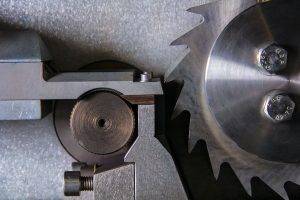Limitations of Metal Stamping Parts One Should Consider

Metal stamping is an industrialized or building process which relies on machinery fitted dies to make shapes from sheet metal. Also, with the help of this process, you can notch, punch, tool, blank, bend, emboss, and coin sheet materials.
Being an industrialist expert, everyone looks for best thing being a precision metal stamping parts supplier or buyer. In order to have a successful metal stamping process, it’s imperative to first consider the basic limitations of this process, as these limitation set few key criteria which technicians take into account, and perform according to it.
Before shedding light towards those basic limitations, first it’s imperative to learn the types of material used, and recognize what effect does the choice of material make on metal stamping limitations.
Types & Effect Of Materials Influencing Metal Stamping Limitations
In metal stamping process, each metal comprise of different level of thickness and harness, the feature of an exact material will affect the finished part, like;
- Thickness that must be punched
- Area for forming
- Hardness of metal and grain direction
- Spring back of the material when stamped
Types of Material Used for metal stamping
- Stainless steel
- Aluminum clad copper
- Aluminum
- Ferrous and non-ferrous
- Wire
What are the basic limitations?
Now, we are going to talk about those basic conditions, or so called limitations which must be considered for a successful metal stamping process.
Understand the Impact of Critical Dimensions for Your Part
The first condition is, try to understand the impact of critical dimension for your part. Being an expert metal stamper, you ought to know all of the critical dimensions upfront so you can make you’re your production process up to the mark.
Once the part of customized tool for stamping is been designed and built, it might be past the point where it is possible to address the basic measurements in the device without causing extra expenses.
Identify the Right Dimensions & Tolerances
Another important limitation for a successful metal stamping is, identify the right dimension and tolerance of chosen material. A more extensive scope of resilience’s might be adequate, contingent upon the part and its get together.
Here once more, CAD might be a piece of the issue, as the product may default to a specific number of decimal focuses, which might be too tight for high-volume generation.
You should know, what material works for which process?
Many metal stampers believe that this process can easily use for casting molding, and other types of stamping. Wrong! Since it depends on the complexity of material, it could conceivably be conceivable to swap the procedure. Rolling out little improvements to the part configuration rather could have enormous funds on tooling costs.
Relate the relationship of selected material with the metal stamping process
There are different types of metal with different level of thicknesses to affect the stamping process. For instance, a few metals will break or spring back after stamping.
Metal stamping specialists should assist the producers with determining the best material for the exactness stamping process or recommend choices.
Stay connected to Chmeindustry for bunch of all new interesting blogs and articles.
Inquire Now

